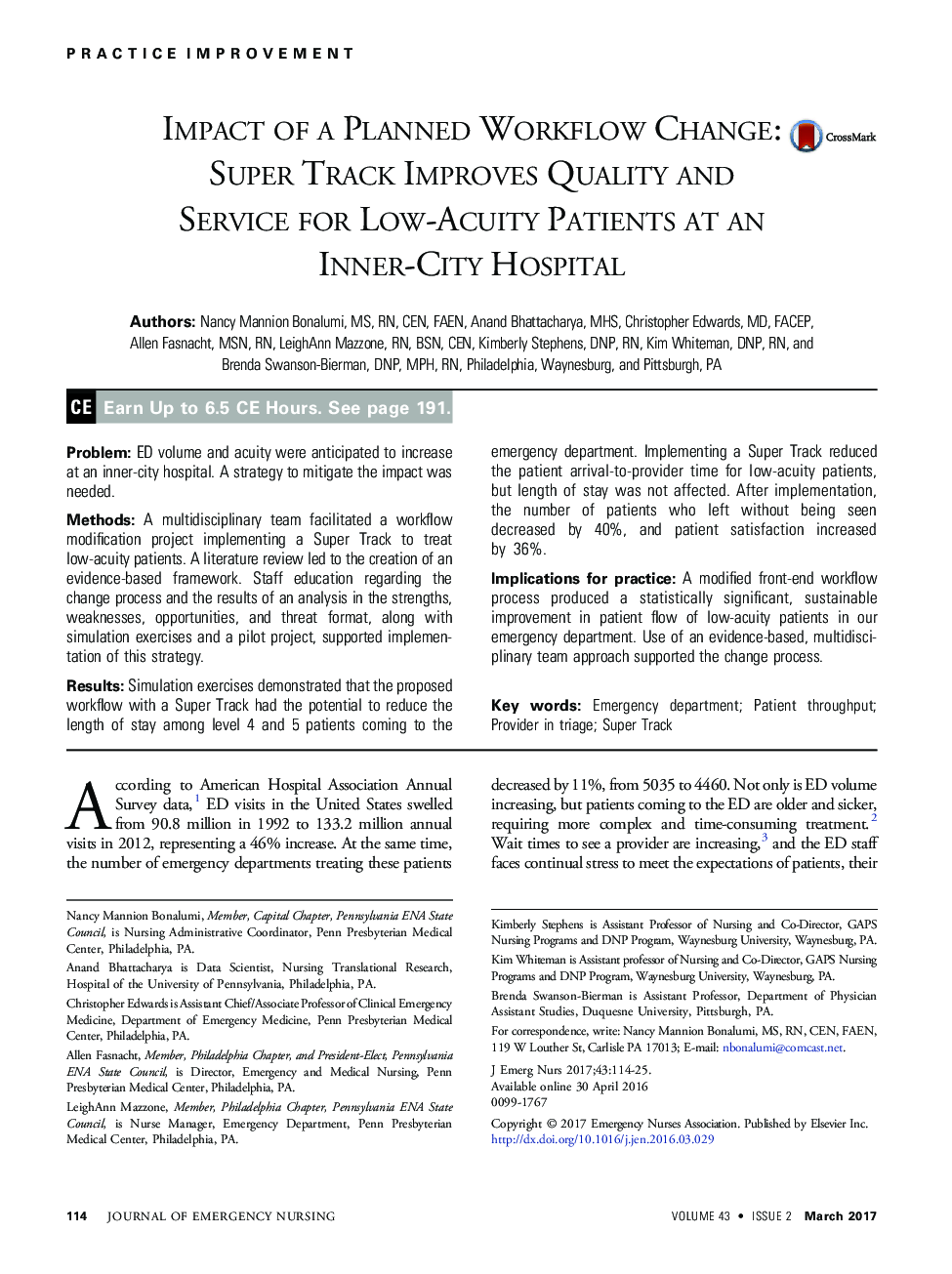| Article ID | Journal | Published Year | Pages | File Type |
|---|---|---|---|---|
| 5563218 | Journal of Emergency Nursing | 2017 | 12 Pages |
ProblemED volume and acuity were anticipated to increase at an inner-city hospital. A strategy to mitigate the impact was needed.MethodsA multidisciplinary team facilitated a workflow modification project implementing a Super Track to treat low-acuity patients. A literature review led to the creation of an evidence-based framework. Staff education regarding the change process and the results of an analysis in the strengths, weaknesses, opportunities, and threat format, along with simulation exercises and a pilot project, supported implementation of this strategy.ResultsSimulation exercises demonstrated that the proposed workflow with a Super Track had the potential to reduce the length of stay among level 4 and 5 patients coming to the emergency department. Implementing a Super Track reduced the patient arrival-to-provider time for low-acuity patients, but length of stay was not affected. After implementation, the number of patients who left without being seen decreased by 40%, and patient satisfaction increased by 36%.Implications for practiceA modified front-end workflow process produced a statistically significant, sustainable improvement in patient flow of low-acuity patients in our emergency department. Use of an evidence-based, multidisciplinary team approach supported the change process.
